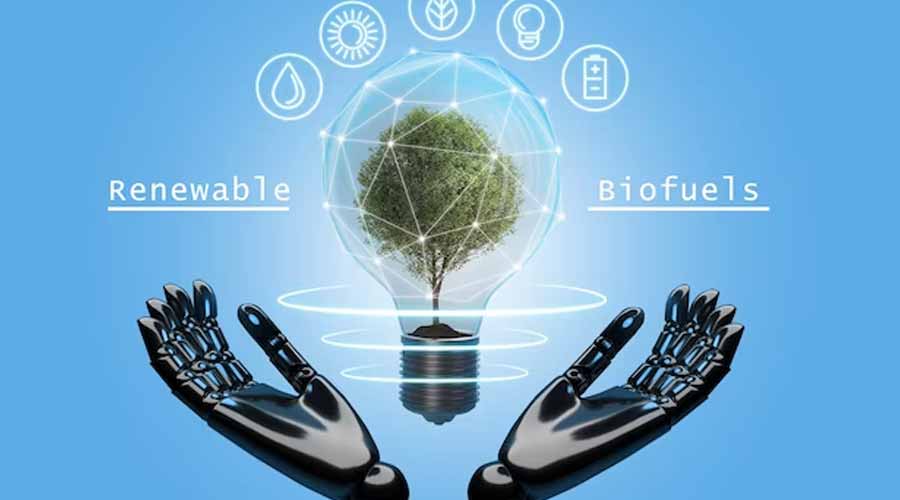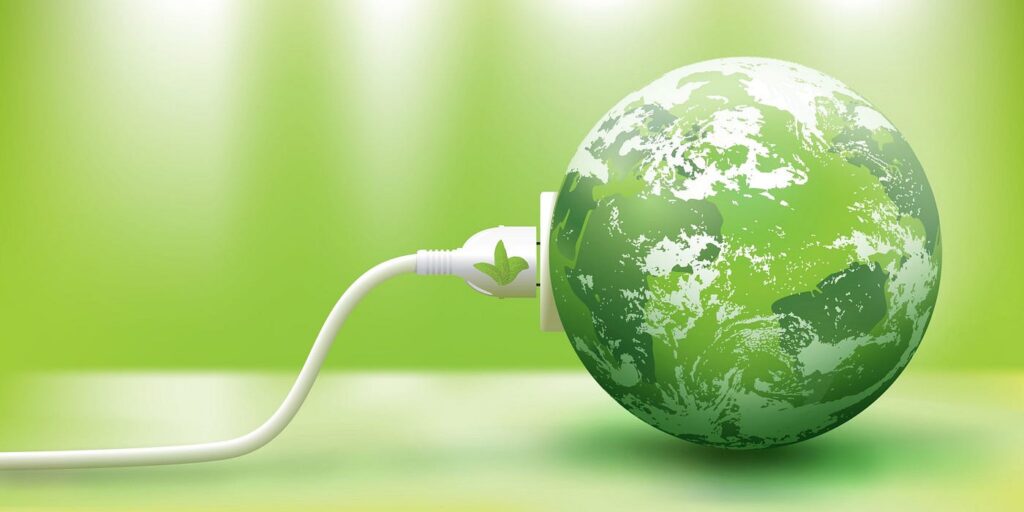Green technology, often referred to as environmental technology, is at the forefront of creating sustainable solutions for a more eco-friendly future. This field encompasses a broad range of innovations designed to reduce environmental impact, enhance energy efficiency, and promote sustainability.
As global awareness of environmental issues grows, green technology plays a crucial role in addressing climate change, resource depletion, and pollution. This article explores key innovations in green technology, their benefits, and how they contribute to a sustainable future.

Advancements in Renewable Energy Technologies
Renewable energy technologies are central to green technology and are pivotal in reducing reliance on fossil fuels. Innovations in this area focus on harnessing natural resources to generate clean energy, minimizing environmental impact, and promoting sustainability.
Key Renewable Energy Innovations:
- Solar Power: Advances in photovoltaic (PV) technology have increased the efficiency of solar panels, making solar power a more viable and cost-effective option. Innovations include thin-film solar cells and solar panel coatings that improve performance and longevity.
- Wind Energy: Modern wind turbines are more efficient and capable of generating power in a wider range of wind conditions. Innovations such as vertical-axis wind turbines and floating wind farms are expanding the potential for wind energy deployment.
- Hydropower: New technologies in hydropower, such as small modular hydropower systems and hydrokinetic turbines, offer sustainable solutions for harnessing energy from flowing water without large dams.

Energy Efficiency and Smart Grid Technologies
Improving energy efficiency and optimizing energy use are crucial components of green technology. Smart grid technologies and energy-efficient solutions help manage energy consumption, reduce waste, and enhance overall system performance.
Energy Efficiency Innovations:
- Smart Grids: Smart grid technology enhances the reliability and efficiency of electricity distribution by using digital communication and automation. This technology allows for real-time monitoring and management of energy resources, reducing waste and improving energy distribution.
- Energy-Efficient Buildings: Green building technologies, such as advanced insulation materials, energy-efficient HVAC systems, and smart lighting, contribute to reducing energy consumption in residential and commercial buildings.
- Demand Response Systems: These systems manage electricity usage by adjusting demand based on real-time conditions, leading to more efficient energy use and lower costs.
Sustainable Transportation Solutions
Transportation is a major contributor to greenhouse gas emissions and pollution. Green technology innovations in this sector focus on reducing emissions, improving fuel efficiency, and promoting alternative modes of transportation.
Innovations in Sustainable Transportation:
- Electric Vehicles (EVs): EVs are becoming increasingly popular as a cleaner alternative to conventional gasoline-powered vehicles. Advances in battery technology, charging infrastructure, and vehicle efficiency are driving the growth of the electric vehicle market.
- Hydrogen Fuel Cells: Hydrogen fuel cell technology offers a zero-emission alternative to traditional internal combustion engines. Innovations in fuel cell design and hydrogen production are enhancing the viability of this technology for both passenger and commercial vehicles.
- Public Transit Solutions: Eco-friendly public transit options, such as electric buses and trains, contribute to reducing urban pollution and congestion while promoting sustainable transportation.
Waste Management and Recycling Technologies
Effective waste management and recycling are essential for reducing environmental impact and conserving resources. Green technology innovations in this area focus on improving waste processing, recycling efficiency, and reducing landfill use.
Key Waste Management Innovations:
- Advanced Recycling Technologies: Innovations in recycling processes, such as automated sorting systems and chemical recycling, improve the efficiency and effectiveness of recycling programs, leading to higher recovery rates and reduced waste.
- Waste-to-Energy Systems: Waste-to-energy technologies convert municipal and industrial waste into usable energy, reducing the volume of waste sent to landfills and providing an alternative source of power.
- Biodegradable Materials: The development of biodegradable and compostable materials offers environmentally friendly alternatives to traditional plastics, reducing pollution and promoting sustainability.
The Role of Policy and Regulation in Green Technology
Policy and regulation play a vital role in promoting the adoption of green technologies and ensuring their effective implementation. Government initiatives, incentives, and standards help drive innovation and support the transition to a sustainable future.
Key Policy and Regulatory Considerations:
- Renewable Energy Incentives: Government incentives, such as tax credits and grants, encourage the adoption of renewable energy technologies and support research and development in the field.
- Environmental Standards: Regulations and standards for emissions, energy efficiency, and waste management help ensure that green technologies meet performance and environmental criteria.
- International Agreements: Global agreements, such as the Paris Agreement, set targets for reducing greenhouse gas emissions and promoting sustainable practices, guiding national and regional policies.
Frequently Asked Questions (FAQ) about Green Technology
Q1: What is green technology?
A: Green technology refers to innovations and solutions designed to reduce environmental impact, enhance sustainability, and promote the efficient use of natural resources. It encompasses a range of technologies and practices aimed at addressing environmental challenges.
Q2: How do renewable energy technologies benefit the environment?
A: Renewable energy technologies, such as solar, wind, and hydropower, generate clean energy from natural resources without emitting greenhouse gases or pollutants. They help reduce reliance on fossil fuels, mitigate climate change, and promote environmental sustainability.
Q3: What are smart grids and how do they work?
A: Smart grids use digital communication and automation to improve the efficiency and reliability of electricity distribution. They enable real-time monitoring and management of energy resources, reduce waste, and enhance overall system performance.
Q4: What advancements are being made in electric vehicles (EVs)?
A: Recent advancements in electric vehicles include improved battery technology, faster charging infrastructure, and increased vehicle range. These innovations contribute to making EVs a more practical and sustainable alternative to gasoline-powered vehicles.
Q5: How do waste-to-energy systems work?
A: Waste-to-energy systems convert municipal and industrial waste into usable energy through processes such as incineration or gasification. These systems reduce the volume of waste sent to landfills and provide an alternative source of power.
Q6: What role do policies play in promoting green technology?
A: Policies and regulations drive the adoption of green technologies by providing incentives, setting standards, and supporting research and development. Government initiatives help guide the transition to sustainable practices and ensure the effective implementation of green solutions.
Q7: What are biodegradable materials and why are they important?
A: Biodegradable materials break down naturally over time through biological processes, reducing pollution and environmental impact. They offer environmentally friendly alternatives to traditional plastics, contributing to waste reduction and sustainability.
Q8: How can businesses benefit from implementing green technologies?
A: Businesses can benefit from green technologies through reduced operational costs, improved energy efficiency, enhanced reputation, and compliance with environmental regulations. Implementing green solutions can also drive innovation and open new market opportunities.
Q9: What are the challenges associated with green technology adoption?
A: Challenges include high initial costs, the need for specialized knowledge and training, regulatory hurdles, and resistance to change. Addressing these challenges requires collaboration between stakeholders, investment in research, and supportive policies.
Q10: What future trends are expected in green technology?
A: Future trends include advancements in renewable energy, increased adoption of electric and hydrogen-powered vehicles, improved waste management and recycling technologies, and greater integration of smart technologies for energy efficiency and sustainability.